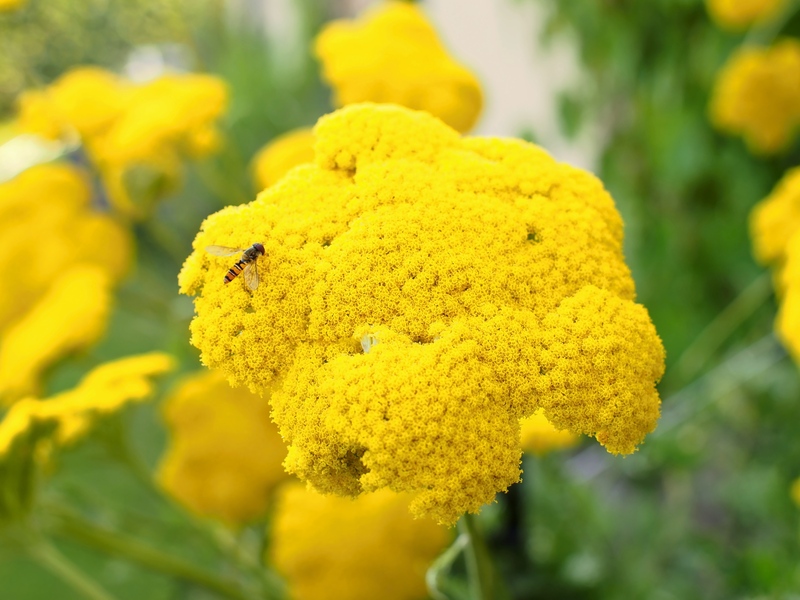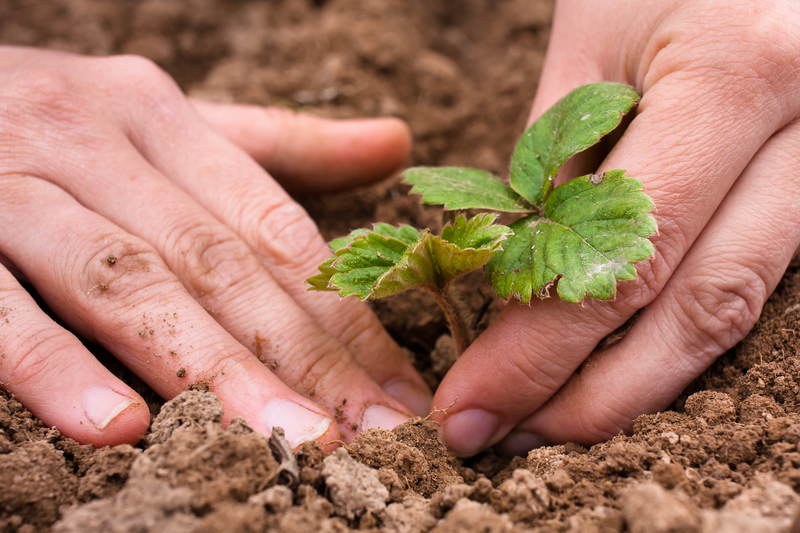Cultivate Your Own Herb Oasis
Posted on 15/08/2025
Cultivate Your Own Herb Oasis: A Complete Guide to Growing Fresh Herbs at Home
Imagine stepping onto your balcony or into your backyard and plucking fresh basil, rosemary, or mint to add vibrant flavor to your dishes and drinks. Creating your own herb oasis at home not only elevates your cooking but also provides a serene and fragrant retreat. Whether you're an urban dweller with a small balcony or a homeowner with garden space, cultivating a lush herb garden is achievable for everyone.
Why Start Your Own Home Herb Garden?
Growing a personal herb oasis comes with a myriad of rewards:
- Freshness and Flavor: Nothing beats the taste and aroma of herbs just snipped from their stems.
- Cost Effectiveness: Save money over purchasing packaged fresh herbs from stores.
- Health Benefits: Many herbs offer natural wellness properties, from aiding digestion to boosting immunity.
- Eco-Friendly: Reduce packaging waste and carbon footprint by growing your own greens.
- Therapeutic Hobby: Tending your herb oasis is a relaxing, rewarding, and educational activity.
Choosing the Right Location for Your Herb Oasis
Success begins with selecting the best spot for your homegrown herbs. Evaluate your available space. Do you have a sunny balcony, a kitchen windowsill, or a patch of backyard? Most culinary herbs flourish with at least 6 hours of sunlight per day. South or west-facing exposures are ideal, but with the right varieties, lower-light gardens are possible.
Herbs for Different Spaces
- Balconies or Patios: Herbs like basil, oregano, thyme, and chives thrive in pots.
- Windowsills: Opt for compact herbs such as parsley, cilantro, or chervil.
- Outdoor Beds: Perennials like rosemary, sage, and lavender develop best directly in richer ground.
Tip: If you have limited sunlight, consider growing shade-tolerant herbs like mint, parsley, or lemon balm.
Planning Your Herb Garden Layout
A well-planned layout can make your herb sanctuary both functional and visually stunning. Think vertical and horizontal:
- Vertical racks or wall-mounted planters are great for tight spaces.
- Tiered containers and window boxes offer aesthetic appeal and easy access.
- Arrange herbs by their water and light needs to streamline care.
Group Mediterranean herbs (like rosemary, thyme, and oregano) as they prefer drier soils, while Parsley, basil, and cilantro enjoy moister conditions.

Best Herbs to Grow for Your Personal Oasis
Some herbs are more forgiving and suitable for beginners, while others may require a little extra attention. Here are some popular and easy-to-grow options:
Top Picks for a Thriving Home Herb Garden
- Basil: An essential for Italian cooking, loves warmth and plenty of sun.
- Mint: Vigorous & aromatic, ideal for teas and desserts--best grown in a container to prevent spreading.
- Thyme: A hardy, drought-tolerant staple for Mediterranean dishes.
- Rosemary: Woody, fragrant, and perennial in warm climates.
- Oregano: Robust and great for pizzas and pasta; thrives in pots or beds.
- Parsley: Flat or curly leaf, excellent for salads and garnish--prefers cooler weather.
- Cilantro: Essential for salsas and Asian cuisine, loves spring or fall temperatures.
- Chives: Mild onion flavor--perfect for toppings and easy to grow indoors or out.
- Lavender: Aside from its intoxicating scent, lavender is a pollinator favorite.
Start with two or three herbs you use most in your kitchen, then expand as you gain confidence with your mini herb oasis.
Seed or Seedling: How Should You Start?
When cultivating your own herb retreat, you can either start from packaged seeds or young transplants (seedlings) from a garden center.
- Seeds: Cheaper, with a wider variety, but require more time and patience.
- Seedlings: Offer instant gratification and are great for beginners.
Pro Tip: Some herbs, like parsley and cilantro, are best sown directly in their final pots, while perennial herbs like rosemary and thyme often establish better from seedlings.
Steps to Cultivate an Abundant Herb Oasis
1. Gather Your Materials
- Potting soil (preferably organic and well-draining)
- Herb seeds or seedlings
- Pots or containers with drainage holes
- Small trowel or spoon
- Watering can or spray bottle
- Plant markers or labels
2. Select the Right Container
For container gardening, choose pots at least 6-12 inches deep, with good drainage. Terra cotta pots are classic, but plastic or recycled containers work well too. If you're planting in a raised bed or garden plot, ensure soil is fertile and loose.
3. Plant Your Herbs
- For seeds, sow according to package instructions--most need just a light covering of soil.
- For seedlings, gently loosen the roots, and plant at the same depth as in their nursery pot.
- Water gently, ensuring soil is damp but not soggy.
4. Water and Feed Your Plants
Most herbs prefer to dry slightly between watering, especially those of Mediterranean origin. Mint and basil like more moisture. Fertilize sparingly--too much can lead to lush foliage with diminished flavor. Use a balanced, organic fertilizer every 4-6 weeks.
5. Prune and Harvest Regularly
Frequent cutting encourages bushier growth and prevents flowering, which can cause herbs like basil and coriander to become bitter. Pinch tips often and harvest leaves from the top down for lasting productivity.
Troubleshooting Common Herb Garden Problems
Dealing with Pests
Home-grown herbs generally attract fewer pests than vegetables, but you may encounter aphids, spider mites, or whiteflies. Rinse affected leaves with a strong spray of water or use organic neem oil if needed.
Overwatering and Root Rot
Signs include yellow leaves and mushy roots. Always ensure containers have excellent drainage and let the top inch of soil dry out between watering sessions.
Leggy or Pale Growth
This usually results from insufficient sunlight. Move plants to a brighter spot or supplement with a grow light during darker seasons.
Herb Garden Design Ideas for Inspiration
Your herb oasis can be as creative as you wish:
- Windowsill setup: Elegant clay pots or matching tins on a sunny kitchen shelf
- Vertical gardens: Use pockets, hanging planters, or wall grids for small spaces
- Spiral herb beds: Beautiful for larger gardens, a spiral raises some herbs above others for varying sunlight and drainage
- Hanging baskets: Ideal for trailing herbs such as thyme or oregano
- Palette planters: Upcycle a wooden pallet to create a rustic, multi-tiered herb display
Year-Round Care for Your Herb Sanctuary
Seasonal Tips
- Spring/Summer: Most herbs grow vigorously; direct sow seeds and transplant outside after frost.
- Fall: Bring potted herbs indoors before cold nights. Prune and reduce fertilizer.
- Winter: Grow herbs on a sunny indoor windowsill. Water sparingly and keep away from drafts.
Extending the Harvest
Many herbs can be dried or frozen for use through the off-season. Bundle and hang sprigs in a dry, dark place, or chop and freeze in olive oil for instant addition to recipes.
Culinary and Wellness Uses For Your Herb Oasis
Your personal herb garden offers endless possibilities:
- Fresh flavor: Chop herbs into salads, sauces, or soups.
- Herb-infused oils and vinegars: Preserve the scents and tastes of summer for months.
- Herbal teas: Enjoy calming chamomile or a stimulating cup of mint tea straight from your garden.
- Natural remedies: Many herbs boast health benefits--think thyme tea for sore throats, or basil for upset stomachs.
- Creative crafts: Use lavender and rosemary in bouquets, sachets, or homemade bath salts.

Frequently Asked Questions about Herb Oases
1. How much sunlight do herbs need?
Six hours of direct sunlight daily is optimum. If you have less light, select shade-tolerant herbs and supplement with grow lights if necessary.
2. Can I grow herbs all year indoors?
Yes! With a bright windowsill or a simple LED grow light, you can maintain a thriving indoor herb oasis throughout the year.
3. What's the easiest herb for beginners?
Chives, parsley, mint, and basil are all forgiving and well-suited to novices.
4. How do I prevent herbs from bolting (going to seed)?
Pinch off flower buds as soon as they appear and harvest often to keep plants producing leaves instead of seeds.
5. Is it possible to combine herbs in the same pot?
Yes, as long as they have similar water and light requirements. Avoid mixing thirsty herbs (like basil and parsley) with drought-lovers (like rosemary and thyme).
Final Thoughts: Transform Your Space with a Herb Oasis
Creating your own herb oasis at home is both practical and deeply satisfying. Whether you're filling a kitchen window with potted greens or designing a large outdoor bed, you're investing in beauty, flavor, and health. Growing herbs is accessible, affordable, and can be tailored to any living situation. With the knowledge from this comprehensive guide to cultivating your own herb garden, you're ready to enjoy fresh, homegrown herbs year-round--one snip at a time.
Start your urban herb sanctuary today and bring the lush, aromatic magic of a private herb oasis into your everyday life.

